|
|
|
Sort Order |
|
|
|
Items / Page
|
|
|
|
|
|
|
| Srl | Item |
| 1 |
ID:
027650


|
|
|
|
|
| Publication |
California, Goodyear Publishing Company Inc., 1971.
|
| Description |
x, 256p
|
| Standard Number |
0-87620-081-1
|
|
|
|
|
|
|
|
|
|
|
|
Copies: C:1/I:0,R:0,Q:0
Circulation
| Accession# | Call# | Current Location | Status | Policy | Location |
| 007121 | 658/GHO 007121 | Main | On Shelf | General | |
|
|
|
|
| 2 |
ID:
040650


|
|
|
|
|
| Publication |
California, Addison-Wesley Publishing Company, 1969.
|
| Description |
viii, 120p
|
| Series |
Addison-Wesley series
|
|
|
|
|
|
|
|
|
|
|
|
Copies: C:1/I:0,R:0,Q:0
Circulation
| Accession# | Call# | Current Location | Status | Policy | Location |
| 004029 | 658/BLA 004029 | Main | On Shelf | General | |
|
|
|
|
| 3 |
ID:
001215
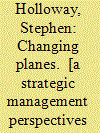

|
|
|
|
|
| Publication |
Aldershot, Ashgate, 1998.
|
| Description |
v.1(xxii, 353p.)Hardbound
|
| Contents |
Vol.1-2
|
| Standard Number |
0291398553
|
|
|
|
|
|
|
|
|
|
|
|
Copies: C:2/I:0,R:0,Q:0
Circulation
| Accession# | Call# | Current Location | Status | Policy | Location |
| 040742 | 387.7/HOL 040742 | Main | On Shelf | General | |
| 040743 | 387.7/HOL 040743 | Main | On Shelf | General | |
|
|
|
|
| 4 |
ID:
050986


|
|
|
|
|
| Publication |
Princeton, Princeton University Press, 2003.
|
| Description |
xii, 327p.
|
| Standard Number |
0691115346
|
|
|
|
|
|
|
|
|
|
|
|
Copies: C:1/I:0,R:0,Q:0
Circulation
| Accession# | Call# | Current Location | Status | Policy | Location |
| 047921 | 321.8/SUL 047921 | Main | On Shelf | General | |
|
|
|
|
| 5 |
ID:
096278
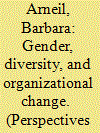

|
|
|
|
|
| Publication |
2010.
|
| Summary/Abstract |
After growing for decades, the Boy Scouts and Girl Scouts both experienced a dramatic drop in membership during the 1970s. Since then their membership patterns have diverged as the Boy Scouts of America (BSA) continues to decline and the Girl Scouts of the USA (GSUSA) has reached near record numbers. These patterns raise two questions: Why the decline? And why the divergence? On the cause of decline, I argue that a younger civil rights generation, informed by a new set of post-materialist values, did not join traditional organizations like the BSA and GSUSA because their values were deemed to be outdated. The challenge for traditional organizations therefore was how to respond. Using path dependency theory, I argue that BSA and GSUSA-shaped by their own unique origins and identities-responded very differently to the critical juncture of the civil rights generation, which in turn explains the subsequent divergence in membership patterns from the 1980s onward. While the BSA rejects such changes in order to defend traditional values, the GSUSA, which established a commitment to challenging gender norms from its birth, embraces the new values and adapts virtually every aspect of its organizational identity to this new generation. As young people see themselves reflected back in the values endorsed by the GSUSA, its membership resurges, while the BSA continues to decline. I conclude by drawing out larger theoretical lessons on the meaning of change in American civil society in light of an increasingly diverse population.
|
|
|
|
|
|
|
|
|
|
|
|
|
|
|
|
| 6 |
ID:
078311


|
|
|
|
|
| Publication |
Hampshire, Ashgate Publishing Limited, 2007.
|
| Description |
xv, 319p.
|
| Standard Number |
9780754649830
|
|
|
|
|
|
|
|
|
|
|
|
Copies: C:1/I:0,R:0,Q:0
Circulation
| Accession# | Call# | Current Location | Status | Policy | Location |
| 052494 | 351.73/BEK 052494 | Main | On Shelf | General | |
|
|
|
|
| 7 |
ID:
165355
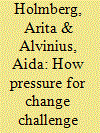

|
|
|
|
|
| Summary/Abstract |
This article elaborates on how structural, normative and functional pressures for change may challenge military organizational characteristics. We problematize theoretically and exemplify empirically what consequences these pressures can have on military organizational characteristics, arguing that they constitute major challenges for managing in particular normative pressures for change. The empirical examples suggest that bureaucratic, hierarchical, narcissistic and greedy traits of the organization are challenged by normative pressures such as value changes and normalization. Another source of challenge is professionalization processes. Structural challenges, on the other hand, are managed by the organization and do not seem to inhibit the workings of organizational characteristics. The plausibility probe conducted questions the sustainability of military organizational characteristics in their traditional disguise, in particular due to legitimacy concerns. It is suggested that future research should be directed towards analyzing how military organizations manage pressure for change and whether their characteristics are questioned.
|
|
|
|
|
|
|
|
|
|
|
|
|
|
|
|
| 8 |
ID:
175248
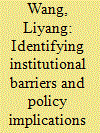

|
|
|
|
|
| Summary/Abstract |
Large organizations wield considerable market power, their procurement activities can be leveraged to achieve social, economic and environmental goals by ‘pulling’ more desirable products into the market. However, while there is substantial research in individual consumer buying behavior and market barriers to sustainable technology adoption, less is known about large organizational buying behavior and the impact of institutional barriers in this area. To address these research gaps, we conducted an exploratory study aimed at better understanding the process through which large organizations purchase sustainable energy technologies and what internal barriers they experience during that process. We surveyed and interviewed 120 individuals involved in procurement from Californian organizations representing both public and private sectors. Survey results indicate the need to resolve the conflict between prioritizing lowest first cost and lowest life cycle cost, better engage multiple stakeholders involved in internal decision-making around purchasing, and improve existing procurement tools or offer new ones. We provide recommendations for how policymakers can apply our findings to increase the adoption of sustainable energy technologies in their own organizations and communities.
|
|
|
|
|
|
|
|
|
|
|
|
|
|
|
|
| 9 |
ID:
040929


|
|
|
|
|
| Publication |
New York, McGraw-Hill Book Company, 1972.
|
| Description |
x, 248p.Hbk
|
| Standard Number |
0070431140
|
|
|
|
|
|
|
|
|
|
|
|
Copies: C:1/I:0,R:0,Q:0
Circulation
| Accession# | Call# | Current Location | Status | Policy | Location |
| 010740 | 658.406/MOR 010740 | Main | On Shelf | General | |
|
|
|
|
| 10 |
ID:
141150


|
|
|
|
|
| Summary/Abstract |
Tactical learning is critical to battlefield success, especially in a counterinsurgency. This article tests the existing model of military adaption against a ‘most-likely’ case: the British Army’s counterinsurgency in the Southern Cameroons (1960–61). Despite meeting all preconditions thought to enable adaptation – decentralization, leadership turnover, supportive leadership, poor organizational memory, feedback loops, and a clear threat – the British still failed to adapt. Archival evidence suggests politicians subverted bottom-up adaptation, because winning came at too high a price in terms of Britain’s broader strategic imperatives. Our finding identifies an important gap in the extant adaptation literature: it ignores politics.
|
|
|
|
|
|
|
|
|
|
|
|
|
|
|
|
| 11 |
ID:
032740


|
|
|
|
|
| Publication |
Harmondsworth, Penguin Books Ltd, 1971.
|
| Description |
383p.
|
| Series |
Penguin modern management readings
|
|
|
|
|
|
|
|
|
|
|
|
Copies: C:1/I:0,R:0,Q:0
Circulation
| Accession# | Call# | Current Location | Status | Policy | Location |
| 007523 | 658.1/STA 007523 | Main | On Shelf | General | |
|
|
|
|
| 12 |
ID:
071047
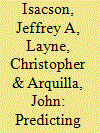

|
|
|
|
|
| Publication |
Santa Monica, Rand Corporation, 1999.
|
| Description |
xi, 60p.
|
| Standard Number |
0833026755
|
|
|
|
|
|
|
|
|
|
|
|
Copies: C:1/I:0,R:0,Q:0
Circulation
| Accession# | Call# | Current Location | Status | Policy | Location |
| 041305 | 355.02/ISA 041305 | Main | On Shelf | General | |
|
|
|
|
| 13 |
ID:
187108


|
|
|
|
|
| Summary/Abstract |
This article examines the experiences of newly graduated officers and specialist officers, as they recently entered employment in the Swedish Armed Forces. Building on 35 interviews, this article illustrates the dynamics of excessive workload and an unstructured working environment, and how embedded strategies for mentoring and guidance can reduce negative outcomes associated with the workload. The article introduces the concept of career time, reflecting the participant’s propensity to perform unpaid work to pursue a career in the organization. This study reveals tensions between organizational and employee interests, and experiences of exclusion from the officer profession, contextualized drawing on classical theorists Foucault and Habermas. When restructuring organizations, the quest for efficiency can outweigh professional values, such as esprit de corps and taking pride in work and professional identity.
|
|
|
|
|
|
|
|
|
|
|
|
|
|
|
|
| 14 |
ID:
050640


|
|
|
|
|
| Publication |
London, Routledge, 2004.
|
| Description |
xv, 349p.
|
| Standard Number |
0415314488
|
|
|
|
|
|
|
|
|
|
|
|
Copies: C:1/I:0,R:0,Q:0
Circulation
| Accession# | Call# | Current Location | Status | Policy | Location |
| 047780 | 352.367/POL 047780 | Main | On Shelf | General | |
|
|
|
|
| 15 |
ID:
070097
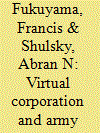

|
|
|
|
|
| Publication |
Santa Monica, Rand Corporation, 1997.
|
| Description |
xvii, 81p.
|
| Standard Number |
0833025325
|
|
|
|
|
|
|
|
|
|
|
|
Copies: C:1/I:0,R:0,Q:0
Circulation
| Accession# | Call# | Current Location | Status | Policy | Location |
| 039026 | 355.30973/FUK 039026 | Main | On Shelf | General | |
|
|
|
|
| 16 |
ID:
189427


|
|
|
|
|
| Summary/Abstract |
The study of military innovation is one of the most important topics in the strategic studies arena, but when it comes to defining the term ‘military innovation,’ there is a remarkable lack of consensus. Lack of agreement on a definition makes it harder to advance knowledge beyond specific cases and for ongoing research to have policy relevance. Currently, what one might consider an innovation another might call an adaptation of an existing technology or tactic, or neither. To move forward, we survey dozens of existing studies and review articles for proposed definitions and examples of military innovation. We locate common and differentiating themes across a wide range of definitions and (at times) conflicting conceptual terminology. We then propose a new framework for thinking about military innovation that builds on existing research and suggests a path forward for future research. Finally, in an online appendix, we demonstrate the plausibility of the framework applied to prominent cases.
|
|
|
|
|
|
|
|
|
|
|
|
|
|
|
|
|
|
|
|
|